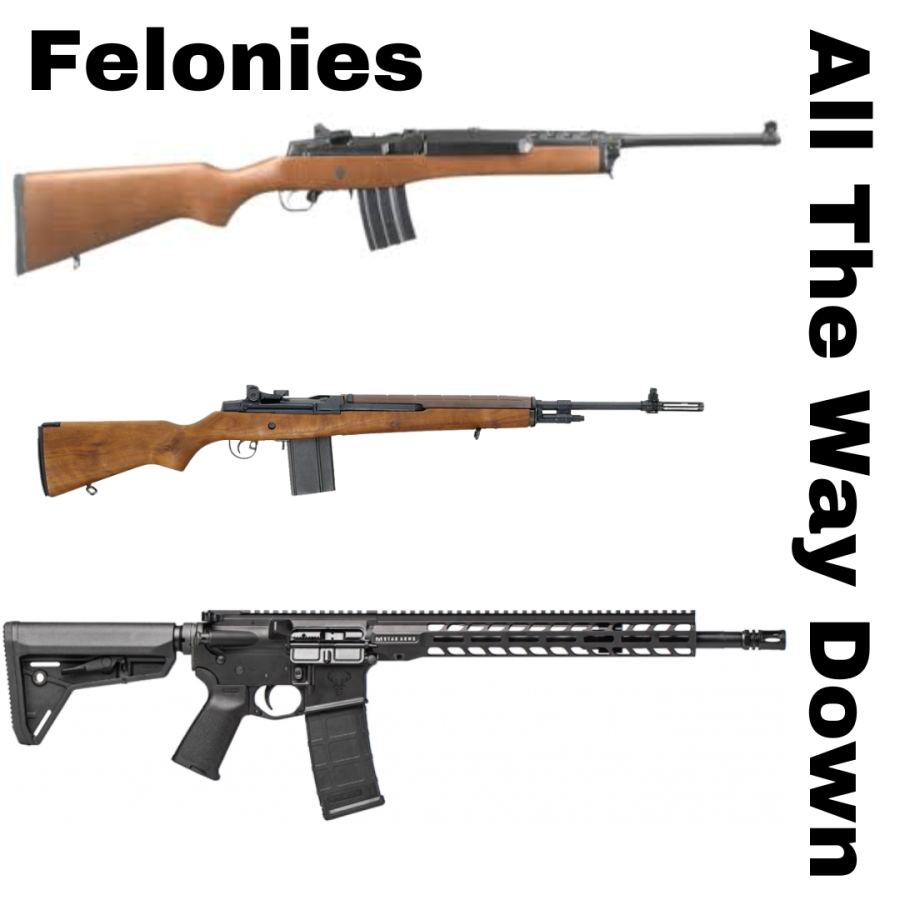Unsurprisingly, Illinois’ “Assault Weapon Ban” won’t stop gun violence
Graphic created by Cole Clayton with Canva
The new gun control law will do little to curb violent crime.
January 18, 2023
I turned 18 in October. I was nervously excited about this important milestone in my life. I could vote, sign my own legal documents, and most relevantly, purchase a gun.
With murder on the rise nationally and a wave of carjackings in the Chicagoland area, the choice to own a gun for self-defense seemed obvious. I would’ve rather sought out to purchase a pistol due to concealability, but federal law prevents licensed dealers from selling pistols and pistol ammunition to adults under 21 years old. So a semi-automatic rifle, like the AR-15, would have to do.
But my plans were foiled when, not 10 days into the new year, Illinois Democrats rammed the “Protect Illinois Communities Act” through the Illinois House and Senate. This act bans the manufacture and sale of so-called “assault weapons” and “high-capacity magazines” and was signed late last Tuesday by J.B. Pritzker.
Illinois Democrats and Democrats across the country applauded the bans, saying they would make the state safer and prevent gun violence. However, there’s little evidence that the bans will prevent crime or stop mass shootings.
The RAND Corporation, which researches gun policy in the United States, found that “assault weapons bans” (AWBs) have uncertain effects on mass shootings. The five studies on AWBs that met the Corporation’s inclusion criteria identified inconsistent evidence for the effectiveness of the bans.
Only a single credible study found that bans on “high-capacity magazines” resulted in a statistically significant decrease in mass shootings. Due to the lack of accurate research, the effectiveness of “high-capacity magazine bans” earns RAND’s “LIMITED evidence” rating.
The anti-gun argument often fails to account for one simple fact about so-called “assault” or “military-style” rifles: They’re rarely used in gun crimes. Gun crimes with any rifle make up a minuscule amount of overall gun crimes.
According to FBI murder statistics, there were 10,258 murders committed with a gun in the US in 2019. Of the 10,258 murders committed with a firearm, only 364 were committed with a rifle or about 3.5%. The 364 statistic includes all firearms classified as rifles under federal law, which states that rifles are made or remade to be fired from the shoulder.
That includes guns like the single-shot bolt-action plinker you shot at Boy Scout camp, your grandad’s bolt-action hunting rifle, “assault rifles” like the AR-15, and everything in between. Murders with all rifles, let alone “assault rifles,” were less common in 2019 than murders with blunt objects, “personal weapons” like fists and feet, and knives.
Politicians and anti-gun activists can grandstand about mass shootings, demonize gun owners, and call “assault” weapons like the AR-15 dangerous, but the data is clear. Americans own up to 44 million AR-15-style rifles, and the AR-15 made up over 20% of gun sales in recent years, yet “assault” rifles are used in less than 3.5% of all gun crimes. All Illinois’ “Assault Weapon Ban” does is trample on the right of law-abiding and peaceable gun owners to keep and bear their weapon and magazine of choice.








Ian Fickes-Wagaw • Jan 19, 2023 at 12:56 pm
Cringe
_ • Jan 24, 2023 at 9:02 pm
Really, that’s your only response to an article about the ineffectiveness of policy? To say “Cringe” as if this newspaper was a dank meme? You didn’t even bother putting in enough effort to write something as simple as “RAND is a biased source.” in your response? No wonder it’s hard for many to treat supporters of this ban seriously.
Ian Fickes-Wagaw • Jan 26, 2023 at 1:49 pm
Who are u lmao
Daniel Maigler • Jan 19, 2023 at 10:51 am
I think Clayton made some really good points. I am unabashedly anti-gun on a personal level but if making people safer is truly the goal then we need to look at the numbers and target our policies toward things that will be more effective in making a difference. Nice job Clayton.